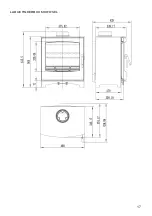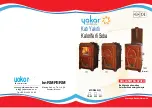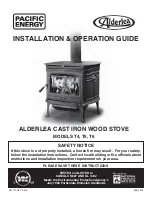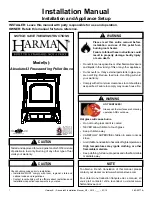
7
2.5 THE CLEAN AIR ACT 1993 AND SMOKE CONTROL AREAS
Under the Clean Air Act local authorities may declare the whole or part of the district of the
authority to be a smoke control area.
It is an offence to emit smoke from a chimney of a building, from a furnace or from any fixed boiler
if located in a designated smoke control area. It is also an offence to acquire an “unauthorised fuel”
for use within a smoke control area unless it is used in an “exempt” appliance (“exempted” from the
controls which generally apply in the smoke control area).
In England appliances are exempted by publication on a list by the Secretary of State in accordance
with changes made to sections 20 and 21 of the Clean Air Act 1993 by section 15 of the Deregulation
Act 2015.
In Scotland appliances are exempted by publication on a list by Scottish Ministers under section 50 of
the Regulatory Reform (Scotland) Act 2014.
In Northern Ireland appliances are exempted by publication on a list by the Department of Agriculture,
Environment and Rural Affairs under Section 16 of the Environmental Better regulation Act (Northern
Ireland) 2016.
In Wales appliances are exempted by regulations made by Welsh Ministers.
Further information on the requirements of the Clean Air Act can be found here:
https://www.gov.uk/smoke-control-area-rules
Your local authority is responsible for implementing the Clean Air Act 1993 including designation and
supervision of smoke control areas and you can contact them for details of Clean Air Act requirements.
The Mi-Fire Small Tinderbox MF Model: 137-SMF-TBOX, Mi-Fire Medium Tinderbox MF Model:
137-MMF-TBOX & Mi-Fire Large Tinderbox MF Model: 137-LMF-TBOX have been recommended as
suitable for use in smoke control areas when burning wood logs.
The appliances have been factory fitted with a modification to fix the air controls at the correct
minimum position to comply with the smoke control requirements.
This appliance must not be used in a shared flue
system
The minimum flue draft is 12 Pascal’s at nominal
output.
2.4 VENTILATION / FRESH AIR SUPPLY
In order for the wood burning stove to function
at optimum efficiency, air is needed for the
combustion process. There must be sufficient
fresh air coming into the room containing the
wood burning stove.
In very well-insulated houses, or houses with
powerful cooker hoods and/or air conditioning
systems, a vacuum can be created around the
wood burning stove, leading to smoke leakage
and poor combustion.
In normal scenarios this stove complies with the
guidance given in approved Document J of the
Building Regulations that states that purpose
provided ventilation is not required in England
and Wales unless the appliance nominal rated
output is greater than 5kW.
Extractor Fan Warning:
There must not be an
extractor fan fitted in the same room as the stove
as this can cause the stove to emit fumes into
the room. If unavoidable the appliance must be
checked with Approved Document (A.D.) 1.21 and
necessary action taken
Action may have to be taken if other heating
appliances are in the same dwelling to make sure
the correct ventilation applies.
2.6 COMMISSIONING
Check all internal parts are fitted correctly and
there are no gaps between the firebricks and
baffles and the log retainer is secure.
During transportation, it may happen that the
baffle plate in steel falls out of place. Therefore,
before using the stove, please make sure that the
baffle plate is properly placed (on the hooks or
fastened to the bolts depending on the model)
Make sure the flue connection if secure and
sealed.




































